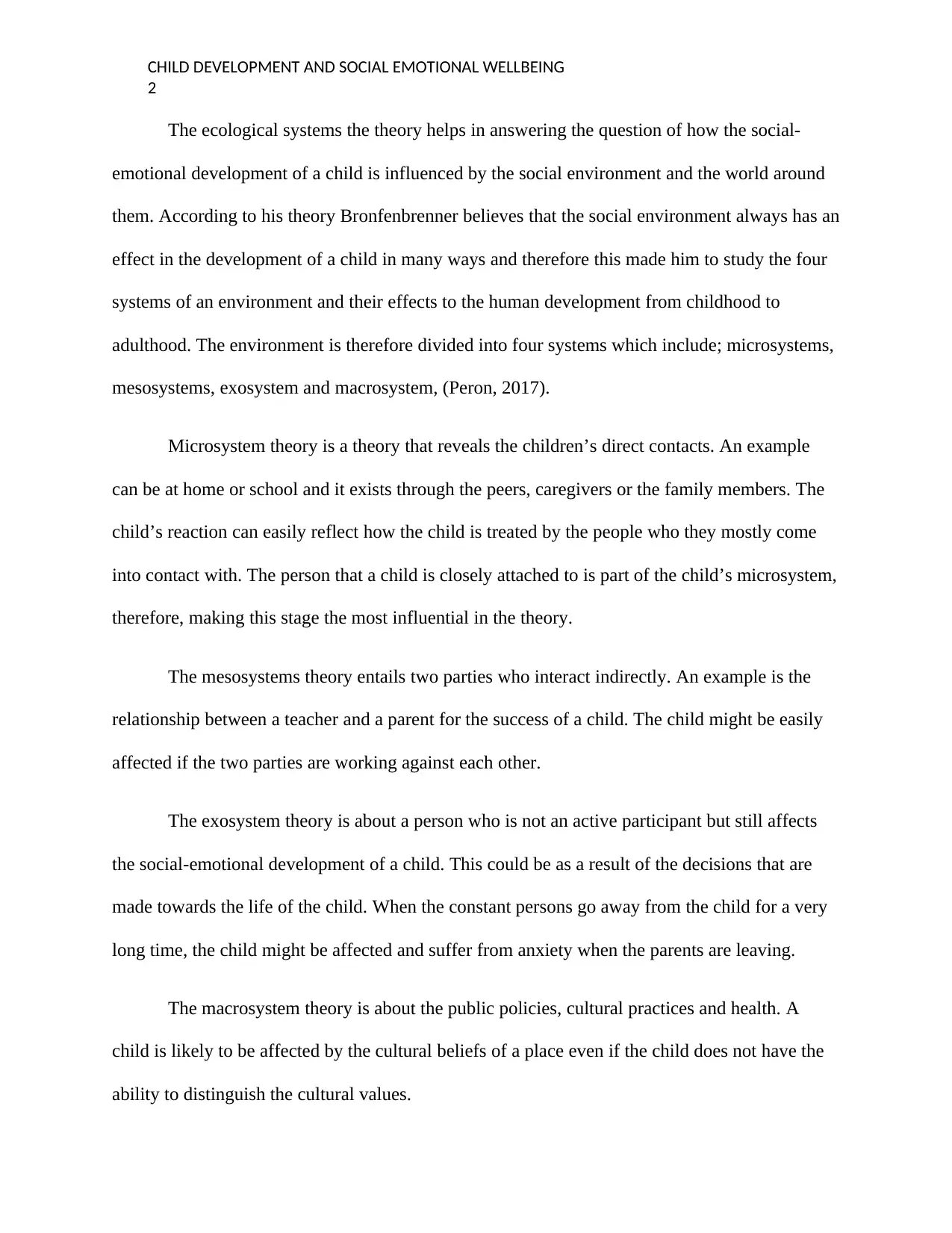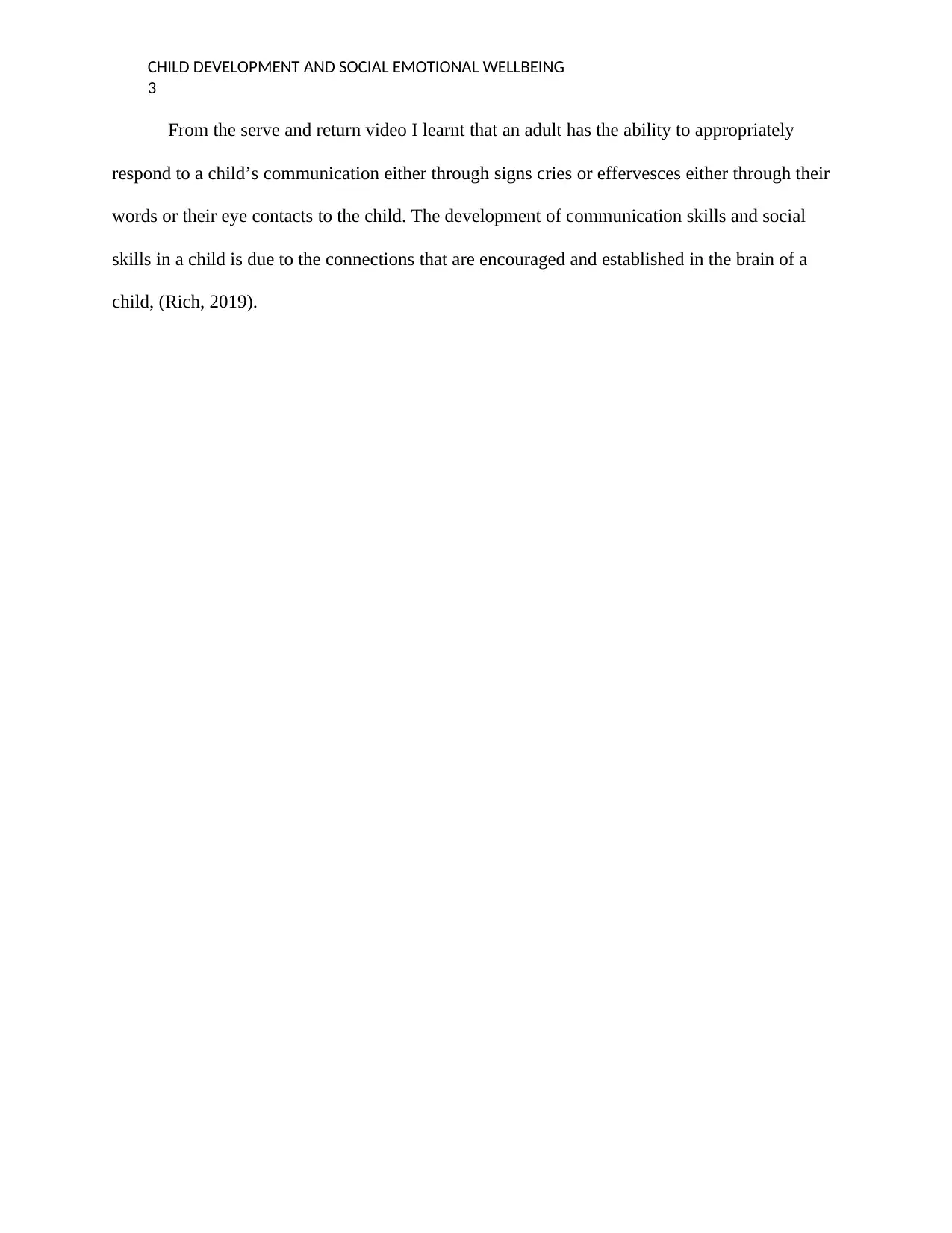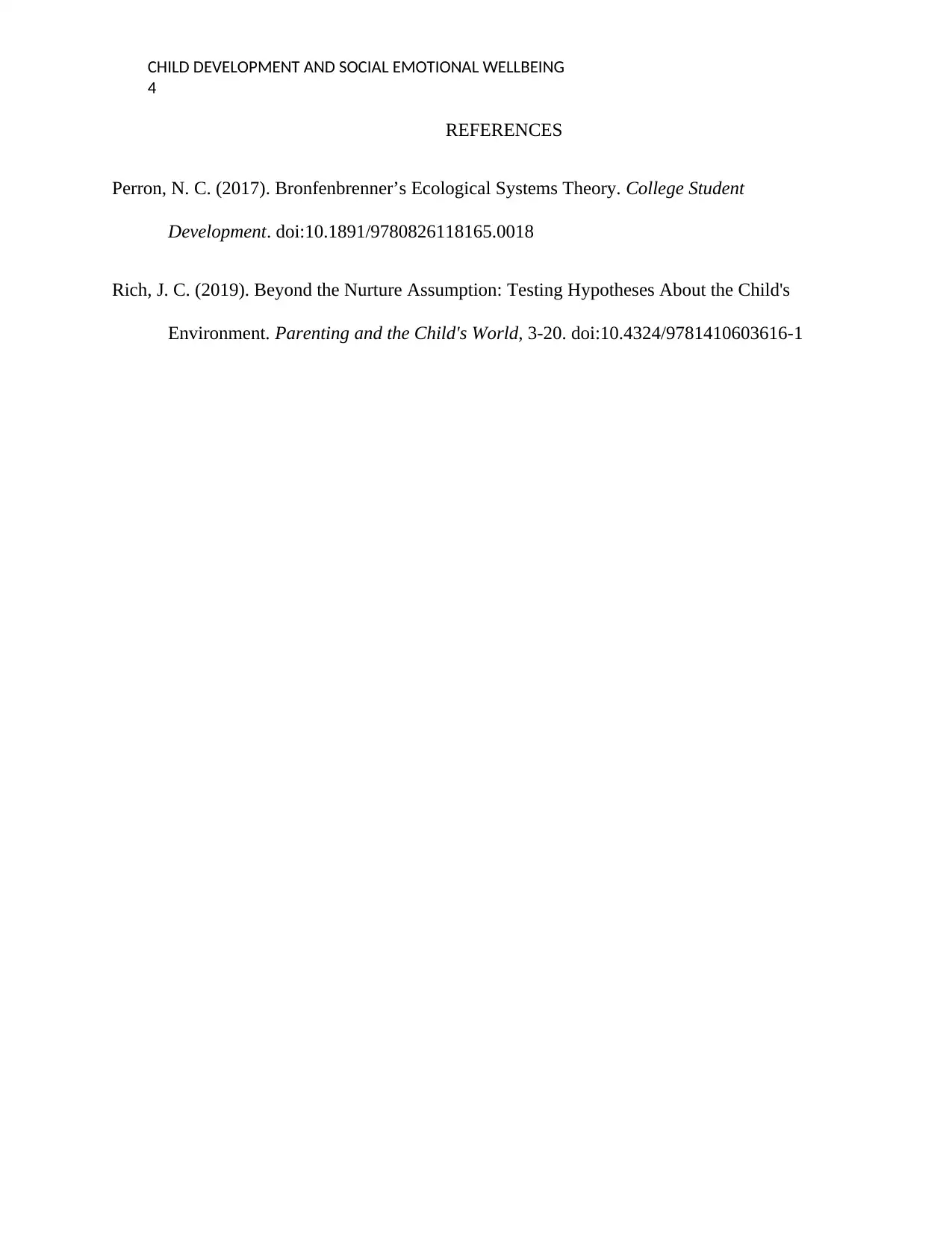An Analysis of Child Development and Social-Emotional Wellbeing Report
VerifiedAdded on 2022/07/27
|4
|502
|26
Report
AI Summary
This report examines the principles of child development and social-emotional wellbeing, with a specific focus on Bronfenbrenner's ecological systems theory. The report discusses how the social environment, including microsystems, mesosystems, exosystems, and macrosystems, influences a child's development. It explains how direct interactions, indirect connections, and broader societal factors all play a role in shaping a child's social and emotional growth. The report also touches upon the importance of responsive caregiving and the role of communication in fostering healthy development, referencing the 'serve and return' video. The report highlights how the child's environment affects their communication skills, social skills and overall wellbeing. The report uses credible references to support the information.
1 out of 4







![Ecological Systems Theory and Child Development Essay, [University]](/_next/image/?url=https%3A%2F%2Fdesklib.com%2Fmedia%2Fimages%2Fzr%2Ff9a594fb207243969d0a32ecfd8ad4a4.jpg&w=256&q=75)



![[object Object]](/_next/static/media/star-bottom.7253800d.svg)